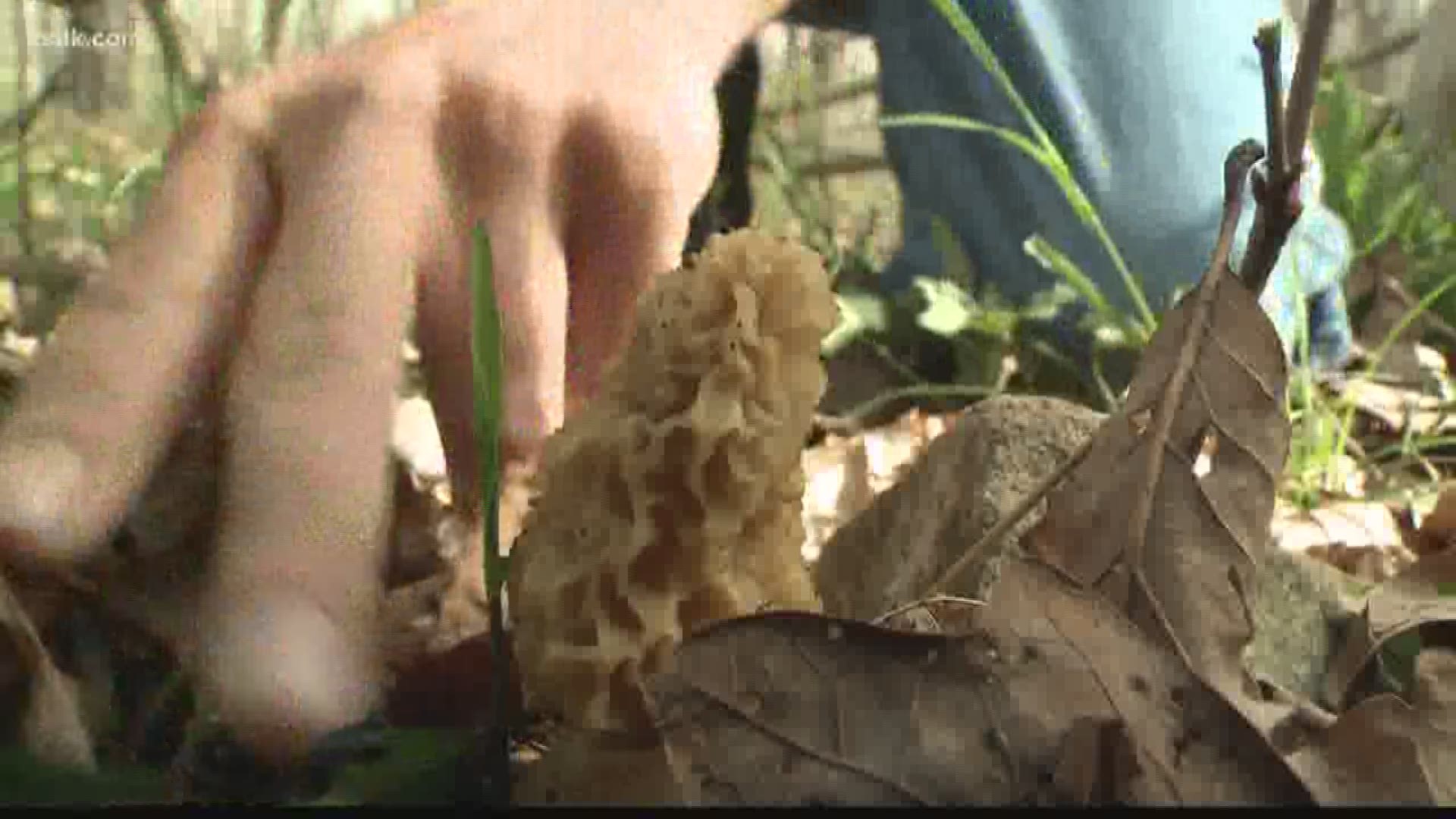ST. LOUIS — Spring is here which means morel mushroom hunting season is right around the corner. The brain-like fungi are popular delicacies amongst Midwesterners.
If you’re a morel hunter, or if you’re interested in learning about the mushroom, here’s everything you need to know.
Note: The video above is from 2019.
What are morel mushrooms?
There are three species of morels across Missouri, according to the Missouri Department of Conservation.
All morels have hollow stems and emerge from the ground in the spring. The mushrooms are covered with pits and ridges, which resemble a sponge or honeycomb.
In black and yellow morels, the bottom of the head is attached directly to the stem and in half-free morels, the bottom half of the cap hangs free from the stalk, according to MDC.
Morels are considered “choice edible mushrooms” but MDC said, as with all wild mushrooms, you should always cook them before eating.
Malissa Briggler, with MDC, said those in rural parts of the state have enjoyed morels for a very long time. She talked about why she believes they are now becoming more popular among urban areas.
“I think popularity has increased as wild edibles have become more of a novelty in urban areas, they are sold at farmer’s markets, and there seem to be more festivals and local events focused on morels,” Briggler told 5 On Your Side.
'False morels'
When looking for morels to eat, make sure you are eating true morel mushrooms. MDC said there are many species of sac fungi that can resemble morels.
Those “false morels” have “wrinkled, floppy-looking, irregular caps that are brain-like or saddle-shaped, and they may be black, gray, white, brown, or reddish.”
MDC said it’s safest to consider all false morels toxic. To learn more about morel lookalikes, click here.
When to go morel hunting
The timing for morel season really depends on when spring begins, though Briggler said the season usually lasts from early to late April.
Sometimes it’s warm enough to find morels in mid-to-late March or cool enough to still find them in mid-May. Briggler said, so far, it seems to be shaping up to be a late spring this year.
A good indicator that it’s time to go looking for morels is when we start seeing nighttime temperatures that stay above 45-50 degrees and when we’ve had some rainfall, Briggler said
“If we have a dry spring season, morel hunting will likely not go well,” she said.
Where to go morel hunting
Good places to look for morels are low areas with poor drainage, as those areas tend to stay damp longer and encourage fungal growth, Briggler said. The fungus that produces morels thrive from decaying plant material so dead or dying trees, particularly elm trees, are good places to look.
“A good morel hunter once told me that he pays attention to places that had a tornado or significant wind damage occur within the past few years. There would likely be lots of damaged trees and morels usually thrive in places like that,” Briggler told 5 On Your Side.
Briggler said she’s also found morels in unexpected places like under patches of young cedar trees or prairies. Though, she said hunters shouldn’t bother looking around rocky hilltops or glades. Those areas are typically too dry with poor soils that wouldn’t support morels.
Mushroom hunting regulations
For most conservation areas across the state, harvesting morels for personal consumption is permitted. Though, harvesting them for others and for commercial gain is not allowed, Briggler said.
“It is important to always check with the specific conservation area that you are planning to visit because not all areas allow mushroom harvesting,” she said.
For example, MDC nature centers do not allow the harvest of mushrooms, even for personal use. State parks, national forests, national parks and other public lands have regulations set by the managing agency or organization.
Bottom line – make sure to learn who owns the property and check regulations before going mushroom hunting on public lands.

